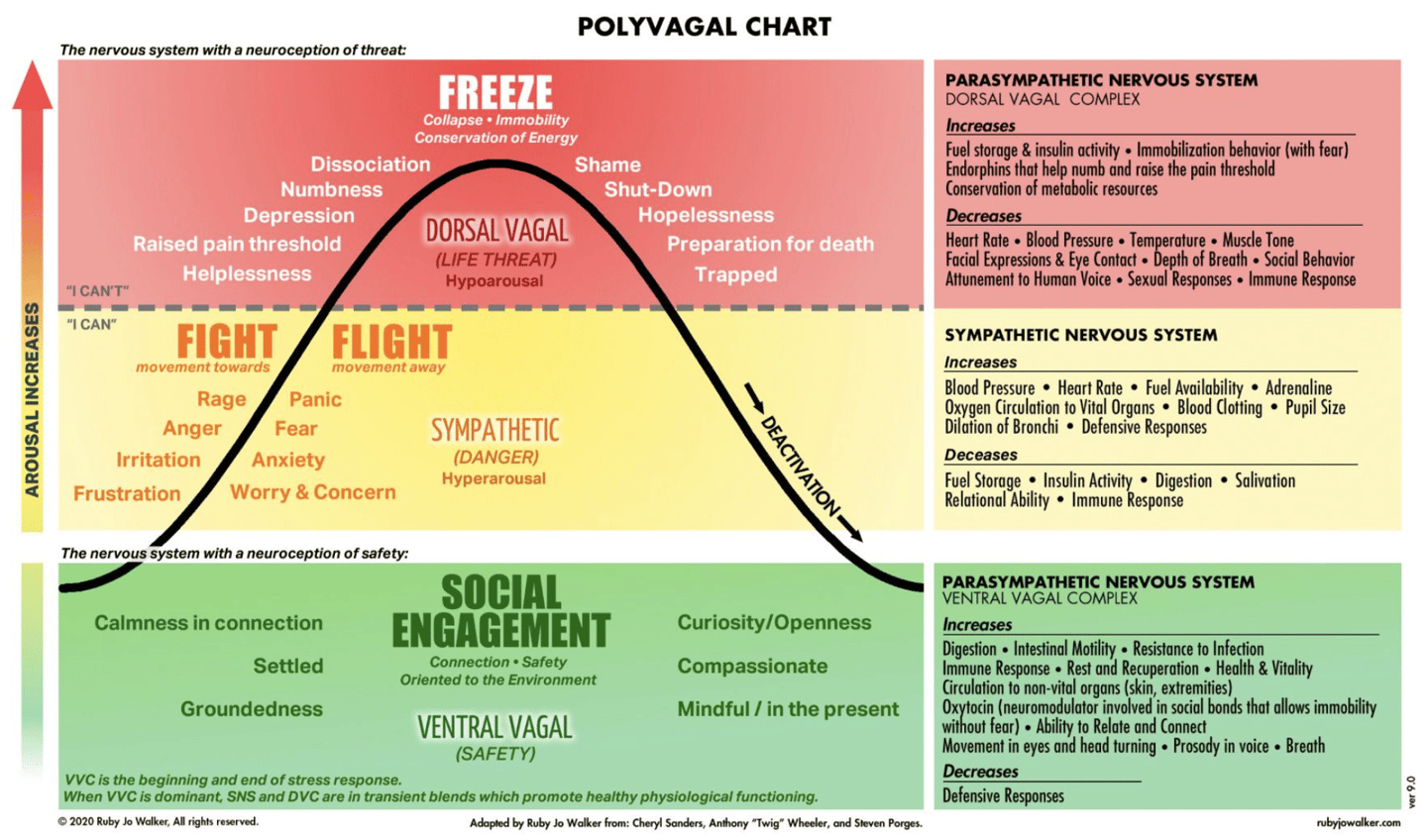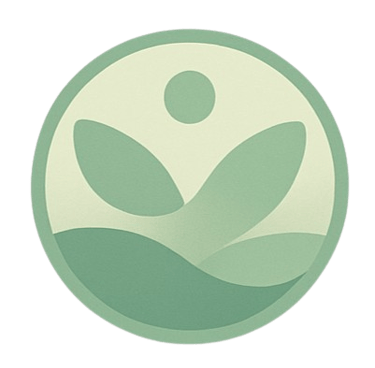What is TRE®? An Introduction Guide to Tension and Trauma Release Exercises
Ever noticed how your body naturally trembles when you're really cold or scared? That's not a malfunction - it's your nervous system's brilliant way of releasing built-up tension. TRE® (Tension & Trauma Release Exercises) taps into this innate healing mechanism, helping you shake off chronic stress and trauma through gentle, natural movements. Discover the fascinating science behind your body's stress responses and learn how simple exercises can unlock years of stored tension.


What is TRE®? A Complete Guide to Tension and Trauma Release Exercises
Discover how your body's natural healing mechanism can help you release stress, tension, and trauma through gentle shaking movements.
Have you ever noticed how animals in the wild shake after escaping danger? Or how your body might naturally tremble when you're really cold or scared? This isn't a malfunction – it's actually your nervous system's brilliant way of releasing built-up tension and stress. That's exactly what TRE® (Tension & Trauma Release Exercises) taps into: your body's innate ability to heal itself.
TRE® stands for Tension & Trauma Release Exercises, a revolutionary approach to wellness developed by Dr. David Berceli. These simple exercises help activate your body's natural tremoring mechanism, allowing you to release deep muscular patterns of stress, tension, and trauma that get stored in your body over time.
Think of TRE® as giving your nervous system permission to do what it naturally wants to do – shake off the stress and return to a state of calm and balance.
The Science Behind Stress: Understanding Your Freeze, Fight, and Flight Response
To understand how TRE® works, we first need to talk about what happens in your body when you encounter stress or danger. It's like having a sophisticated alarm system that instantly prepares you for survival – but sometimes that alarm gets stuck in the "on" position.
The Chemical Cascade: Your Body's Stress Response in Action
When your brain perceives a threat (real or imagined), it triggers your hypothalamic-pituitary-adrenal (HPA) axis – your body's stress command center. Within milliseconds, here's what unfolds:
The Initial Alert:
Your amygdala (brain's alarm center) sends an emergency signal
Adrenaline and noradrenaline flood your bloodstream
Your sympathetic nervous system takes control
Cortisol release prepares your body for sustained action
Fight Response
When your body gears up to confront danger head-on, it's like switching into combat mode:
Physical Changes:
Heart rate jumps from 60-80 bpm to 120-180 bpm
Blood pressure spikes to pump oxygen to muscles
Breathing becomes rapid and shallow (up to 20-30 breaths per minute)
Muscle tension increases dramatically, especially in arms, shoulders, and jaw
Blood sugar rises as your liver releases stored glucose for energy
Pupils dilate for better vision
Digestive system shuts down (why you lose appetite when stressed)
Flight Response
Your body's escape mechanism is equally dramatic:
Physiological Shifts:
Blood flow redirects massively to leg muscles (up to 300% increase)
Heart rate soars even higher than fight response
Breathing rate increases to 25-35 breaths per minute
Stress hormones peak to sustain high-intensity movement
Fine motor skills decrease as gross motor function takes priority
Tunnel vision occurs as focus narrows to escape routes
Freeze Response
When neither fighting nor fleeing seems possible, your body activates what's essentially a biological circuit breaker:
Neurological Changes:
Parasympathetic nervous system suddenly dominates
Heart rate may actually drop dramatically (sometimes dangerously low)
Breathing becomes very shallow or may feel "stuck"
Blood flow to extremities decreases (cold hands and feet)
Dissociation occurs as the brain "goes offline" to protect from overwhelm
Muscle tension locks in place, creating rigid immobility
Time perception distorts (minutes can feel like hours)
The Metabolic Aftermath
After any of these responses, your body needs to process the chemical cocktail it just created:
Cortisol can remain elevated for hours or days
Lactic acid builds up in tensed muscles
Inflammatory markers increase throughout the body
Neurotransmitter balance gets disrupted (affecting mood and sleep)
Immune function temporarily suppresses
The Problem: When Stress Gets Stuck
Here's where things get tricky. While these responses are perfect for handling immediate physical threats (like avoiding a car accident), our modern lives often trigger them repeatedly without giving our bodies a chance to fully complete the stress cycle.
The Modern Dilemma: Your nervous system can't distinguish between a saber-toothed tiger and a demanding boss. Work deadlines, relationship conflicts, financial worries, social media overload – these ongoing stressors can leave us stuck in a chronic state of activation.
What Chronic Activation Does to Your Body:
Cortisol stays elevated, disrupting sleep, digestion, and immune function
Heart rate variability decreases, affecting cardiovascular health
Breathing patterns remain shallow, reducing oxygen efficiency
Muscle tension becomes chronic, especially in the psoas muscle and jaw
Inflammatory responses stay activated, contributing to pain and illness
Where the Tension Lives
Over time, this trapped stress and tension accumulates in specific areas of your body:
The Psoas Muscle: Your body's deepest core muscle, which connects your spine to your legs, becomes a storage center for survival energy. When chronically tight, it affects your posture, breathing, and sense of safety.
Fascial System: This connective tissue network throughout your body holds tension patterns like a three-dimensional memory bank, storing the physical imprint of unresolved stress responses.
This accumulation can lead to chronic pain, anxiety, sleep issues, digestive problems, and that feeling of being constantly "wired but tired" – activated but exhausted at the same time.
What Happens to Your Body During TRE® Practice
When you practice tension release exercises, something beautiful happens. You're essentially helping your nervous system complete those interrupted stress cycles through natural neurogenic tremors.
The TRE® Process: Step by Step
Muscle Fatigue: The TRE® exercises gently fatigue specific muscle groups, particularly around your pelvis and core
Activation: This fatigue triggers your body's natural tremoring response
Release: The tremors help discharge stored tension and stress from your muscles and nervous system
Integration: Your nervous system begins to restore balance and return to a more regulated state
What the Tremors Feel Like
If you've never experienced therapeutic tremoring, you might wonder what it feels like. Most people describe the sensations as:
Gentle vibrations or shaking that feels good and natural
A sense of release or "letting go"
Waves of relaxation spreading through the body
Sometimes emotional releases like crying or laughing
A feeling of lightness or spaciousness afterward
The tremors are completely involuntary and self-regulating – your body will only shake as much as it needs to, and you can stop anytime you want.
The Life-Changing Benefits of TRE®
Regular TRE® practice can create profound shifts in how you feel and function:
Physical Benefits
Reduced muscle tension and chronic pain
Better sleep quality and deeper rest
Improved flexibility and mobility
Stress reduction and lowered cortisol levels
Enhanced immune system function
Emotional and Mental Benefits
Decreased anxiety and worry
Better emotional regulation
Increased resilience to stress
Greater sense of calm and well-being
Improved relationships and social connection
Nervous System Benefits
Trauma release and healing
Restoration of nervous system balance
Enhanced ability to handle future stress
Increased body awareness and self-regulation
Getting Started: Your First Steps with TRE®
The Basic TRE® Exercise Sequence
While it's highly recommended to learn from a certified TRE® provider, here's an overview of the basic exercise sequence:
Standing exercises to gently fatigue leg muscles
Wall exercises for calf and thigh activation
Floor exercises including specific stretches
Butterfly position to encourage pelvic tremoring
Integration time lying down and allowing tremors
Important Safety Guidelines
Start slowly and listen to your body
Dont force tremors – they should happen naturally
Practice in a safe, comfortable space
Stay hydrated and rest afterward
Consider working with a TRE® practitioner initially
Who Can Benefit from TRE®?
Somatic experiencing through TRE® can help virtually anyone dealing with:
Chronic stress or burnout
Post-traumatic stress or PTSD
Anxiety and panic attacks
Chronic pain conditions
Sleep difficulties
Relationship or work-related stress
Physical tension from repetitive activities
TRE® is gentle enough for most people, but it's always wise to consult with a healthcare provider if you have serious medical conditions or a complex trauma history.
Finding Support: Working with a TRE® Provider
While you can learn the basic exercises from books or videos, working with a certified TRE® practitioner offers valuable benefits:
Proper technique guidance
Personalized support and pacing
Help processing any emotions that arise
Safety and reassurance during your healing journey
Deeper understanding of your body's responses
Making TRE® Part of Your Wellness Routine
Body-based healing works best with consistency. Here are some tips for integrating TRE® into your life:
Start with 15-20 minutes, 2-3 times per week
Create a calm, private space for practice
Be patient with the process – healing takes time
Journal about your experiences and changes
Combine with other wellness practices like meditation or yoga
The Bottom Line: Your Body Knows How to Heal
TRE® reminds us of something profound: your body has an incredible innate wisdom and capacity for healing. Sometimes we just need to get out of the way and let our natural processes do their work.
Whether you're dealing with everyday stress or deeper trauma, tension and trauma release exercises offer a gentle, effective path back to balance and well-being. Your nervous system has been waiting patiently for this opportunity to release, restore, and heal.
Ready to begin your TRE® journey? Start by finding a qualified provider in your area, or explore some basic resources to learn more about this powerful self-healing approach. Your body – and your nervous system – will thank you.
Remember: This article is for informational purposes only and doesn't replace professional medical advice. If you're dealing with complex trauma or serious medical conditions, please consult with appropriate healthcare professionals before beginning any new wellness practice.
Connect
Follow
E-mail:
Phone (WhatsApp)
© 2025. All rights reserved.
Useful links


TRE® is a registered trademark with all intellectual rights belonging to TRE® for All, Inc.
TRE® has not been evaluated by the US Food & Drug Administration or the American Medical Association.
This technology is not intended to diagnose, treat, cure, or prevent any disease. Medical advice must only be obtained from a physician or qualified health practitioner.
Results may vary between individuals. There are no guarantees, expressed, or implied.
